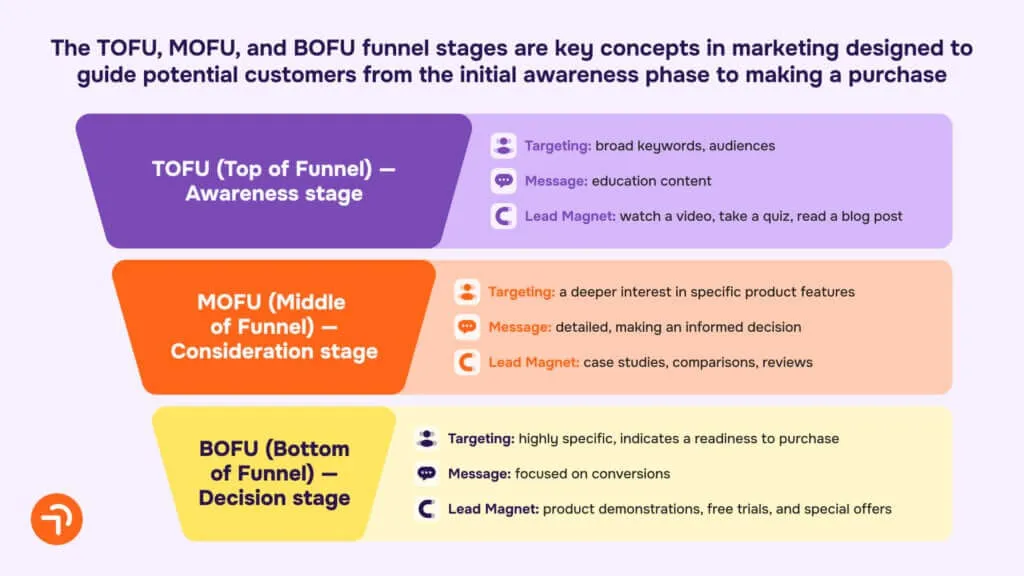3 Rules To Follow When Developing Your SaaS KPIs

Selecting the right SaaS KPIs is one of the most important strategic moves that you have to make as a SaaS marketer. It’s a challenging task that involves a complex and nuanced decision-making, in-depth knowledge, constant fine-tuning, and, ideally, relevant experience.
The Head of PPC at Aimers Nikita Yaroshenko is laying out three key rules to setting the efficient KPIs, supported by hands-on tips and real-life examples. 6+ years of experience in SaaS PPC and 1.4M+ of managed ad spend allow him to pinpoint the most challenging aspects of forming the KPIs, as well as to provide a working foundation that would be useful to any marketer.
In order for your marketing to work effectively and reach the desired outcomes, you have to set the right goals. To quote Denzel Washington, “Dreams without goals are just dreams, and they ultimately fuel disappointment.” And this is where your SaaS Key Performance Indicators (KPIs) come into play.
KPIs are the concrete quantitative metrics that reflect your main marketing goals and your progress in achieving them.
When you form the wrong KPIs, you risk missing your desired outcomes. When you don’t set any KPIs, you are driving blind without GPS while hoping to reach your destination.
The Pitfalls of Incremental Optimization
The strategic mistake that I often see in our industry is too much focus on incremental optimization. When, instead of defining specific goals, everything comes down to “better than now.” Let me tell you, in the current landscape, that’s not enough. You’ve got to aim at concrete goals, not slight improvements.
It’s the same thing as wanting to beat Usain Bolt and set a new a world record in the 100-meter dash – while setting your goal not to finish it under Bolt’s time of 9.58 seconds, but to somewhat improve your current time (however good or bad it might be).
Here are the main rules that I advise you to follow to set your KPIs effectively:
- KPIs must be directly tied to your profits.
- KPIs must be realistic and achievable.
- KPIs must reflect the stages of your marketing funnel and specific ad campaign goals.
SaaS KPIs must be tied to your profits
Here at Aimers we work with tech and SaaS businesses that want to grow their profits. For our clients, ROI and/or ROAS metrics – that’s Return On Investment and Return On Ad Spend, respectively – most often reflect the end goal. These are the most important SaaS KPIs.
However, when it comes to B2B and niches/products with a long sales cycle, it’s difficult to rely only on these two metrics. They do not allow to track the effectiveness of ad campaigns in real-time or within the period of “average time to close a deal” (Average Deal Age). In such cases, it’s important to identify metrics that correlate with the main profit-driven KPIs. These will serve as a guide for you and your company to achieve the ultimate goal – increasing profits.
Below are the top KPIs, connected to ROI and ROAS metrics, that we offer to our clients. From most to least correlated:
1. Number of purchases and CAC (Customer Acquisition Cost).
Both are great options if you can accurately measure these.
2. Number of MQL/SAL/SQL/Opportunity and Cost per MQL/SAL/SQL/Opportunity.
These metrics require a clearly structured funnel for interacting with users at different stages of the sales pipeline. For example, you would know exactly when a lead crosses from SAL to SQL. If you have a well optimized sales funnel in coordination with a CRM system, these will work nicely for you. If you want to form the KPIs around one of the lead stages, you have to determine which one has a sufficient number of users.
3. Number of Qualified Leads and Cost per Qualified Lead.
These two metrics might work for you, if you have not yet fully formed the processes for lead stages, but have clear criteria for qualifying incoming leads (for example, a corporate mail that indicates an enterprise).
4. Number of Leads/Trials/Demos and Cost per Lead/Trial/Demo (CPA).
These basic metrics take into account audience behavior only at the time when a user leaves their contact information (so-called marketing lead). These are very convenient to track within advertising accounts and analytics systems. Therefore, they are quite popular and most commonly used by marketers.
Additionally, here are a couple of things to keep in mind:
- The metrics above refer to the concrete number of desired actions. But this number may arise organically depending on available advertising budget and your CAC/CPA goals. Therefore, it’s critical to consider your advertising budget while setting the KPIs.
Example: Let’s say, you (or your PPC agency) generate sales at $100 mark. At the same time, you only spend $1,000 out of the planned $10,000. That means you hit just 10% of your desired sales volume, and your ads may be unprofitable from a business perspective.
- When setting your goal metrics, it’s also important to consider where your traffic comes from. For example, Conversion Rate (CR) for referral traffic or organic traffic can be significantly higher than for Paid Social or PPC.
Example: You check your CRM and see that every 10th user registering for a trial buys your product. Your product costs $1,000. To recoup the costs of product development, marketing, and maintenance, you want to attract a paying user for $300 (CAC). So you set the following KPIs: CPA (Trial) <= $30, Cost = $3,000. However, you may not take into account that you haven’t had paid incoming traffic before. Its ability to convert may be inferior to your organic traffic or word of mouth. So the CR from trial to paid might be lower – for example, not 10%, but only 5%. As a result, while you hit your KPIs, the cost of a paid user (CAC) will be 2x higher than expected. And you get significantly less profit.
To sum it up, it’s important to use ROAS and ROI as the main metrics or tie your KPIs to them. Identify the metrics with the strongest correlation to ROAS/ROI and a sufficient amount of incoming data, and build your KPIs around these.
SaaS KPIs must be realistic and achievable
While you’re in the process of defining your KPIs, I advise you to go through this checklist:
- How accurate is the metric that you’ve defined as a KPI?
- Does it correlate with profit?
- Is your tracking working correctly? Do you have historical data to rely on?
- What are your current results on selected KPIs? How far are you from the desired outcomes?
- How stable are the current results? If you don’t make any key changes to existing processes, can you assume that your results will stay steady in a week or month from now?
If you want to determine if your KPIs are attainable and realistic, check them against these factors:
- Your current product and website must be capable of generating results at the level of metrics that you’ve defined as your KPIs:
- Check if your product is competitive. The offer and price should not be significantly higher or lower than competitors. If it’s different, then this should be supported by a split of functions/features, successful stories, reviews, recognizable brand, etc.
- Your website must be fully operational and tested for bugs. The sales funnel must be optimized and set up well. Information on the completion of sales stages should be timely provided to the relevant departments. Leads on all stages should be properly processed.
- The ability to achieve selected KPIs is confirmed by historical data from advertising accounts, analytics systems, and CRM systems.
- Your KPIs are not dramatically different from the benchmarks for industry and platforms, where your business operates.
Example: you have a narrow niche and an expensive product that costs over $10,000. You can’t assume that sales will be achieved with CAC=$100 or trials with CPA(Trial)=$20 – since in this case, relevant clicks on keywords might cost more than $10 (Cost Per Click). It makes sense to monitor your industry benchmarks, as they help you set up realistic SaaS marketing KPIs.
KPIs Must Reflect the Stages of Your Marketing Funnel Stages & Specific Ad Campaign Goals
In addition to your main KPIs, you have to be able to track the performance of all other advertising activities. After all, not every advertising campaign is directly aimed at generating demos or sales.
To outline a detailed map of your SaaS marketing goals, you can use the popular Metrics Pyramid and Metrics Hierarchy frameworks.

The main point of these frameworks is to identify the metrics that influence the end goal. This can be your main KPI directly tied to profits (i.e. achieve ROAS > …), which I mentioned in the first point, or a concrete business goal of your company (i.e. increase MRR by …%).
In the next step, you organize these metrics and prioritize the most instrumental by integrating them into various stages of your marketing funnel: top-of-funnel (TOFU), middle-of-funnel (MOFU), and bottom-of-funnel (BOFU).

Let’s say, you are consistently running ads with the aim of selling your product to the user. You run Paid Search campaigns in Google Ads for target keywords like “software for <solution that your product provides>”. In this case, you are working with existing demand at the MOFU/BOFU level. At some point, you realize that it’s time to create more demand at the TOFU stage and expand your audience.
You launch some advertising activities that are aimed at brand awareness and the top of the funnel. But now you can’t build the KPIs of such campaigns around ROAS, CAC or similar metrics because your goals are fundamentally different at the TOFU stage.
Using the Hierarchy and Pyramid of Metrics, you determine what goals these campaigns contribute to and how they correlate to your main goal. You also calculate how these campaigns should perform to reach your desired outcomes. This provides the foundation for your advertising activities for the top of the funnel.
Here are the top metrics that can be used for the TOFU stage:
- Number of newsletter subscribers / webinar participants / white paper downloads / leads and Cost per newsletter subscriber / webinar participant / white paper download / lead (CPA). These are the perfect metrics since they directly correlate to the main KPIs and make it easier to determine target values necessary to achieve the end goal.
- Video Completion Rate / Cost per Video Completion. These are common metrics for video campaigns, but marketers rarely use them as stand-alone KPIs.
- Engagement Rate / Average Engagement Time / Engaged Sessions per User / Average Session Duration / Bounce Rate / Sessions per User. These engagement metrics help to evaluate user engagement and the quality of your traffic. These can be used as additional evaluation criteria.
- New visits / % of New Visitors / New vs Returning Visitors. These metrics are tracked within analytics systems and can help evaluate the quality of brand awareness activities. These can also be used as additional evaluation criteria.
So now you have it: the know-how and the list of the best KPIs for SaaS businesses that you need to track. Best of luck with your KPI strategy!
Would you like us to audit your current metrics? Perhaps, you’d like to set (and hit!) new and optimized KPIs for your business? Drop us a line here, and our team will get back to you shortly.










